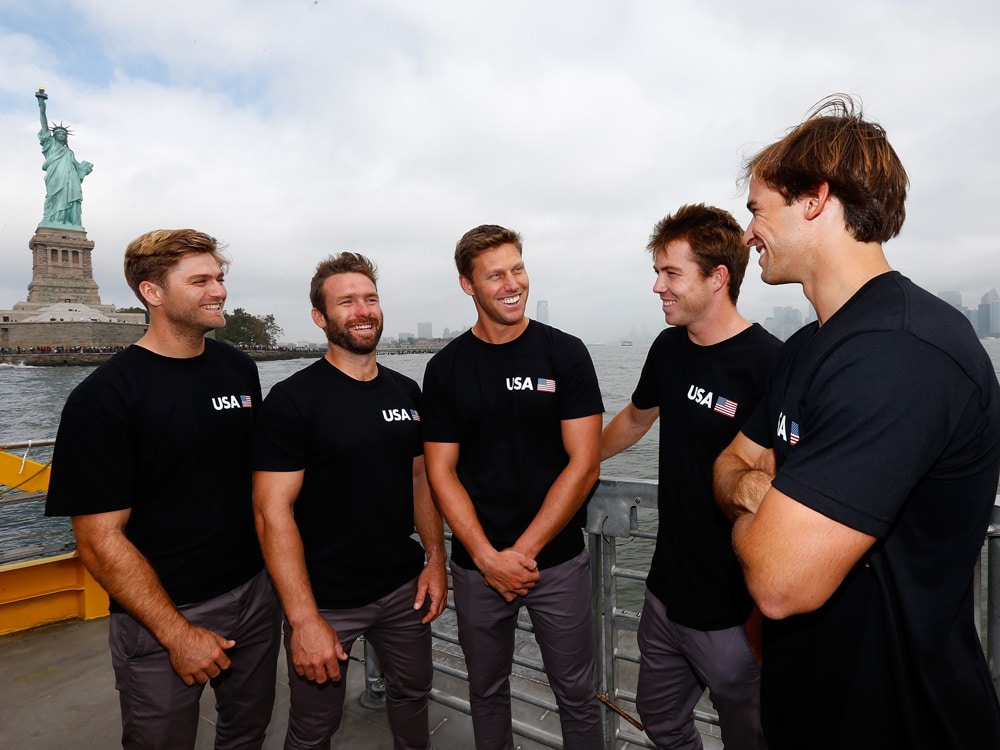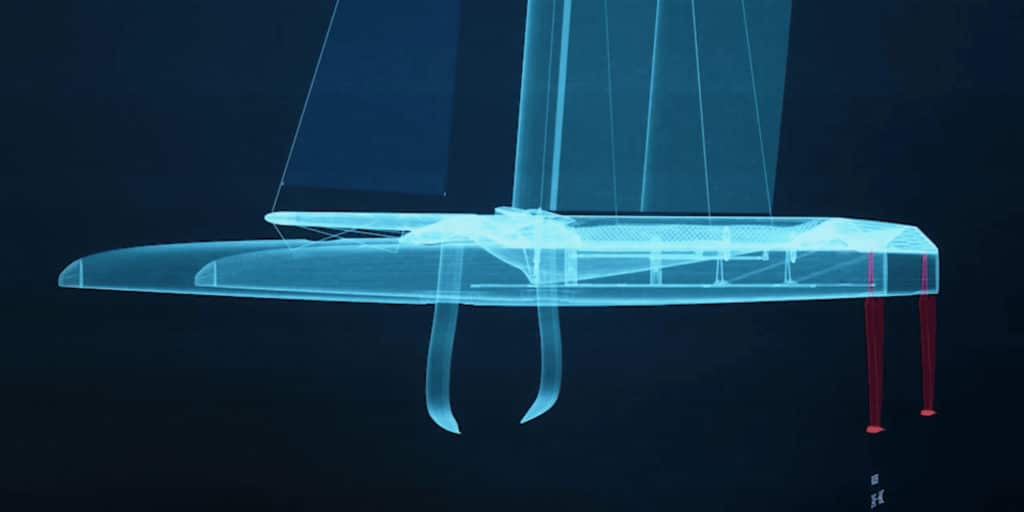
Rome is now the boss. Repeat, Rome is the boss.
We’re talking about Rome Kirby here, the 29-year-old Aquidneck Islander and son of the most badass bowman in all of professional sailing. Kirby has matured from mere nipper in the Volvo Ocean Race six years ago to a cog of the miraculous Oracle Racing Team machine of America’s Cup 34 and again with in Bermuda with Oracle’s unsuccessful defense. Yes, the fit, chiseled and laid-back Rome Kirby, always quick to flash a smile like his old man, is now atop the org chart of the first and only American sailing team on the new SaiGPl pro series.
Technically, Kirby is in charge of the sailing team and all the pegs related to it, but his bosses (again) are Russell Coutts and Larry Ellison, the guys who are ultimately in charge of the show when it kicks off in Sydney, Australia next February, before jumping to San Francisco in May, New York in June, England’s Isle of Wight in August and Marseille, France in September for the big finale with a million-dollar purse.
Pause for a moment and imagine: You’re 29 years old, leading a bunch of wide-eyed youngsters into a globe-trotting regatta series that uses the most wicked 50-foot foil-sailing platforms in existence. And your bosses are Coutts and Ellison. No pressure there, right?
But Kirby has seen pressure. Like when the rig on the Volvo 70 Mar Mostro came down in the middle of ocean no-where in 2011. There was plenty of pressure in San Francisco when the men in black were down 8-to-1. A pasting at the hands of Emirates Team New Zealand in Bermuda was a good serving of humble pie. Along the way to his new role, Kirby’s been sponging knowledge and experience from a few of the best team leaders, on the water and off.
He’s just not ready to talk rock-star status—yet.
“I don’t know about that,” he says after scarfing down a chicken sandwich while being hustled around New York City with his teammates, swapping sailing gear for matching business suits. “We’ve been up since 5 am getting pulled in every direction. The last couple days has been an eye opener for a few of the guys. We were on Fox News at 6 a.m., then we had a TV thing at the Statue of Liberty…then…”
He fades off. “To be honest, I’ve lost track already.”
It was about six months ago, says Kirby, when Coutts asked him to run and skipper the U.S. SailGP team. Since then, he’s been putting the pieces together, top to bottom, without the hassle of hunting for sponsorship. “At this point, Larry [Ellison] is helping every team get going, but the intent is to have every team be self-sufficient in a few years, so for us, there’s been no banging on doors to find money. We’ve been focused on building the team.”
Using an AC45 in Newport for 10 days over the summer, Kirby filtered a squad of “young, talented, hardworking guys.” The starting five are Hans Henken, Dan Morris, Riley Gibbs, Mac Agnese, and Kirby (plus two reserves). Most of them, he says, come from dinghy backgrounds and have done well in their own classes, but most importantly, he went for “team players.”
“The biggest thing for us is having guys that are willing to work,” he says. “It’s not going to be easy because these boats are challenging to sail. It’s going to be a process, we’ll learn, and hopefully we’ll be in contention for the final event.”

While there’s limited foiling-cat experience among the starting five, Kirby admits, he says the modified AC50s, called F50s, will be faster and even more powerful than what we saw in Bermuda in 2017. “They will take it up another level,” he says. “At the end of the day we need guys that adapt and are quick and smart on their feet.”
Serving as a backup to Oracle Racing starting tactician Tom Slingsby for four years, Kirby says he’s acquired a feel for what’s required of the leadership role, of running testing every day and overseeing operations on land and on the water. “I’ve had a taste of it,” he says. “I’m not totally new, but there is some stuff I’ll have to get used to.”
Like the obligatory post-racing press conferences. There, too, he’s learned from the great Jimmy Spithill. “You’ll never be ready for them,” says Kirby, “but I’ll do my best to be as witty as possible and answer as well as I can.”
In November, Kirby and Co., will fly to New Zealand to get a first crack at their F50, with the first event in Sydney in February. The boats have been “turbo-charged” with better foils, controls, batteries, and eventually new wings, but Kirby says the platforms will be a work in progress for the first season.
“The new wings will come later,” Kirby confirms. “Right now, they’re trying to get the boats out the door for the first event and mods and developments will come online over the course of the season. They’ll evolve and get faster and easier to sail once refined. The following season you’ll see everything.”
It’s never been clearly stated in announcements whether or not there’s an expiration date to the series, but understandably, Kirby is keen to see it become a sustainable event, eventually with corporate sponsors getting involved at different levels. “These boats will be dangerous, but not loose and crazy like the SuperFoilers,” he says, referring to the wild foiling craft of the Australian-based series. “The boards and foils will increase the performance big time, and we’re going to be going upwards of 50 knots on the reaches. The thing is you get used to 40 knots, so hopefully we’ll get used to going 50.”
At such speeds, good maneuvers will count more than tactics, he thinks. With the boats being equal, “it will come down to boathandling and keeping it clean and simple,” he says. “The game gets exponentially harder as you go faster. Split-second decisions with everyone on the same page will be crucial to maneuvers.”
With barely enough time in the boat before the first race in Sydney, all six teams will have their hands full, but Kirby is confident they’ll be relatively comfortable with taming the F50. “We’ll have to progress quickly,” he says with a confident laugh. “There will be no slouches and we will have our hands full for sure.”









